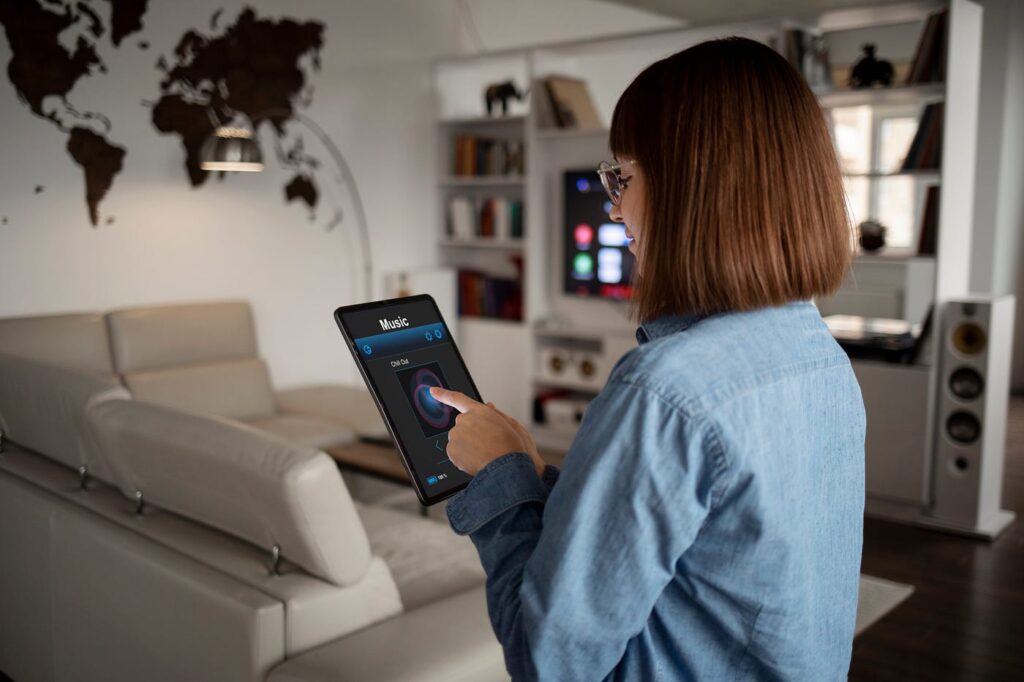The Internet of Things (IoT) is a network of interconnected devices that communicate with each other. These smart devices, such as smartphones, appliances, and wearable devices, automate tasks and make our lives more convenient. Smart home automation allows homeowners to control their homes remotely, improving energy efficiency and security. Wearable devices like fitness trackers monitor our health and provide real-time feedback. In healthcare, IoT enables remote patient monitoring and smart hospitals, improving patient care and efficiency. In transportation, connected vehicles and smart cities enhance safety and resource management. In industrial processes, IoT optimizes productivity and supply chain operations. Overall, IoT revolutionizes our lives and will continue to innovate in the future.
Introduction
The Internet of Things (IoT) refers to the network of interconnected devices that communicate and exchange data with each other. These smart devices, equipped with sensors, software, and internet connectivity, have the ability to revolutionize our lives in many ways.
1. Enhanced Convenience and Efficiency
Smart devices have become an integral part of our daily lives, from smartphones to smart appliances and wearable devices. These devices are designed to make our lives more convenient and efficient by automating various tasks.
1.1 Smart Home Automation
One of the most significant impacts of IoT is the advent of smart home automation. With smart devices such as smart thermostats, lighting systems, and security cameras, homeowners can control and monitor their home remotely. This technology not only provides convenience but also enhances energy efficiency and improves security.
1.2 Wearable Devices
Wearable devices, such as fitness trackers and smartwatches, have become immensely popular. These devices monitor our health and fitness, track our daily activities, and provide real-time feedback. By analyzing the data collected, individuals can make informed decisions about their lifestyle and improve their overall well-being.
2. Improved Healthcare
The IoT has significantly impacted the healthcare sector, offering innovative solutions that improve patient care, increase efficiency, and save lives.
2.1 Remote Patient Monitoring
IoT enables healthcare providers to remotely monitor patients, especially those with chronic conditions. With the help of wearable devices and sensors, real-time data on vital signs, medication intake, and overall health can be tracked. This allows healthcare professionals to intervene promptly if any significant changes occur, ensuring timely and personalized care.
2.2 Smart Hospitals
IoT technology is revolutionizing the concept of hospitals by creating smart healthcare facilities. Smart devices are used for asset tracking, remote patient monitoring, inventory management, and streamlining workflow. These devices help reduce human error, enhance efficiency, and improve patient outcomes.
3. Transportation and Infrastructure
IoT is driving innovation in transportation and infrastructure, leading to safer and more efficient systems.
3.1 Connected Vehicles
Connected vehicles equipped with IoT devices can communicate with each other, traffic lights, and road infrastructure. This enables real-time traffic monitoring, optimized routing, and collision prevention. Additionally, IoT devices can provide vehicle diagnostics, predictive maintenance, and enhance driver safety.
3.2 Smart Cities
IoT plays a crucial role in transforming cities into smart cities. By deploying sensors across the city, data can be collected on various aspects such as traffic flow, energy consumption, waste management, and public safety. This data helps city authorities make informed decisions, leading to better resource management, reduced congestion, and improved quality of life for citizens.
4. Enhanced Industrial Processes
The Industrial Internet of Things (IIoT) is revolutionizing manufacturing and industrial processes. By connecting machines, sensors, and software, industrial processes can be optimized, leading to increased productivity and efficiency.
4.1 Predictive Maintenance
With IoT-enabled sensors, machines and equipment can be monitored in real-time. Data analytics and predictive algorithms can detect signs of potential failures and determine when maintenance is required. This proactive approach reduces downtime and minimizes costly repairs.
4.2 Supply Chain Optimization
IoT devices track products throughout the supply chain, providing real-time visibility and transparency. This enables efficient inventory management, reduces theft, and improves overall supply chain operations.
Conclusion
The Internet of Things has revolutionized our lives by introducing smart devices that enhance convenience, improve healthcare, optimize transportation, and enhance industrial processes. As the IoT continues to evolve, it will undoubtedly transform various aspects of our lives, making them more connected, efficient, and innovative.
